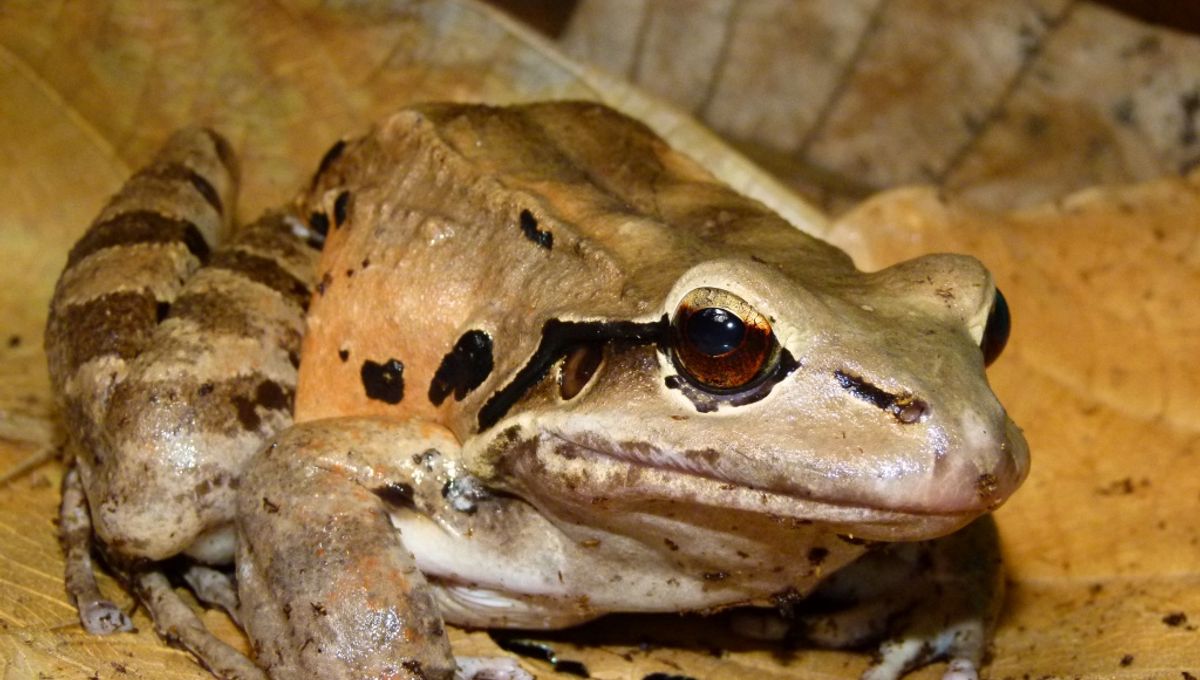
One of the world’s largest frog species is on the brink of extinction due to a devastating combination of infectious disease, climate change, and habitat loss. Once widespread across the Caribbean, the critically endangered mountain chicken frog can now only be found on the island of Dominica, where just 21 of the giant amphibians remain.
Weighing almost 1 kilogram (2.2 pounds) and capable of jumping over a standing human adult, the mountain chicken frog has been in decline since 2002, when the deadly fungus amphibian chytridiomycosis – or chytrid, as it is commonly known – first arrived in the region. Affecting hundreds of amphibians around the world, chytrid has decimated populations and caused more than 90 species to become extinct in just 50 years.
Over the past two decades, conservationists have conducted numerous surveys in Dominica to keep track of the falling population of mountain chicken frogs. The most recent of these saw 28 researchers spend a combined total of 960 hours searching for the animals, with only 21 living individuals spotted during this period.
Tragically, the team also came across two dead frogs, both of which appeared to have been run over. This discovery brings into focus the growing threats faced by the species in addition to the ever-present menace of chytrid. “Sadly, we’re finding the frogs closer and closer to busy roads as they search for water, due to our rivers being so dry due to the changing climate in Dominica,” explained conservationist Jeanelle Brisbane from the Mountain Chicken Recovery Programme (MCRP) in a statement seen by IFLScience.
In addition to climate change, the frogs also have to contend with invasive species such as cats, dogs, and rats, as well as the destruction of their habitats due to agriculture and urban development. Summing up the species’ predicament, Professor Andrew Cunningham from the Zoological Society of London’s Institute of Zoology explained that “in two years, these vitally important apex predators could become extinct in the wild, meaning they will cease to exist anywhere except in human care.”
Offering a glimmer of hope, however, the team revealed that one of the frogs identified in the study had also been tagged in previous surveys and was confirmed to be the oldest living wild mountain chicken frog. At 11 years of age, this sturdy individual has lived through the chytrid pandemic that killed off so many of its relatives, indicating that some frogs may be more resilient to the fungus than others.
Researchers are now taking mouth swabs from the remaining frogs to determine their genetic make-up and search for signs of tolerance to the deadly pathogen. “If these frogs have developed resistance to chytrid fungus this could also give us immense hope for the species,” said Cunningham.
“The next step will be to bring these resistant genes into the breeding programme population so that we can [build] a strong and genetically diverse population that can one day be returned to the wild in Montserrat and Dominica.”
Source Link: Only 21 Of These Enormous Chicken Frogs Remain Alive In The Wild